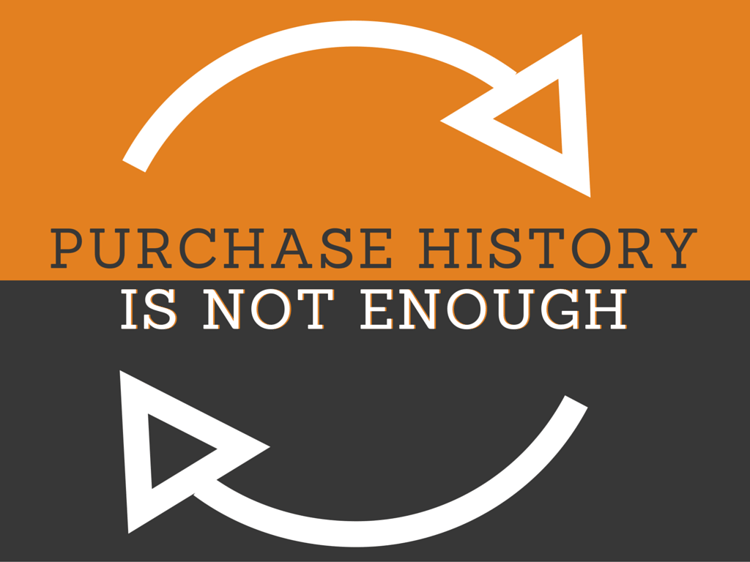Last year, we discussed the state of direct mail and its effectiveness in a digital-first world. And while we found that it was indeed still a powerful force in 2016, a...

Transaction data has played a vital role in direct mail circulation, and it will continue to play a significant role in the future by providing historical insights into your customers and prospects. But with the wealth of information available to modern marketers, it’s time to rethink how you build your prospecting lists. Modern prospecting lists shouldn’t be built on transactional data alone. There is better predictive information available to build your prospecting lists with, and it starts with knowing how a buyer interacts with your company. The modern consumer’s path to purchase has changed, but technology is changing to keep pace with the consumer. You’re now able to see how a shopper interacts with your company on social media, your website, in store or through direct mail efforts, and it is the combination of these actions with your company that will provide you with the insights you need to build a modern prospecting strategy.
Following the Modern Consumer’s Path to Purchase
Direct mail is a great way to reach customers and build long-term relationships. But it’s far from the only game in town.
The truth is that no customer follows a linear path to purchase. Even if your direct mail is second to none, it doesn’t do the job by itself. In fact, no marketing channel is solely responsible for a purchase in this day and age. There are many different contributing factors to every purchase, and the number of outside considerations increases with each passing year.
Suppose you receive an intriguing direct mail offer. You think you might be interested, but you’re skeptical, so you Google the company’s name or you go to a landing page link included in the mailer. You end up on the company’s website, and you read a little bit about the company. You dig a little deeper, looking for reviews on other sites. You also begin to pay attention to the people around you to see if they’re using this product. And after all that, maybe you respond to the offer in the way described by the mailing piece.
The linear path to purchase is now history because people can access unbiased reviews detailing every part of their experience with a given product and company. They can also conduct their own searches to see if they can find a better deal on a similar item. This empowered consumer makes purchasing decisions only after doing research and vetting their choices. Today’s climate requires marketers to go above and beyond to entice customers, because you may only have one shot at delivering the “wow” factor. Fortunately, you have a powerful tool in your arsenal to help you do just that.
Reading Digital Body Language
Understanding a consumer’s motivation to buy can be challenging, because of the sizable disconnect that occurs when you don’t get direct feedback from your prospects. A shopper not making a purchase could be the product of various reasons that may or may not have anything to do with your company or the product. It’s nearly impossible to pinpoint without additional information.
The good news is you can fill in a lot of those blanks by reading the digital body language of your consumers. Digital body language is the telltale signals that indicate a shopper’s areas of interest on your website. If a person lingers on a web page for comforters and then also performs an on-site search for sheet sets, this consumer may have purchased a new bed recently. If this same person also clicks on links to read your blogs on home decorating ideas or tips, you could assume this shopper is looking to redecorate a bedroom. The motivation behind the customer’s actions on your company’s website — either the purchase of a new bed or a desire to redecorate — should influence your direct marketing strategy for this consumer.
This intent data, the accumulated information you gather from a customer’s actions on your company’s online channels, is a much better tool for gauging buyer interest than simply looking at previous purchases, because intent data can be gathered from existing customers as well as prospects who are expressing interest by visiting your website. The real power of intent data is its ability to expand your mailing list with prospects who are actively interested in your company, which is information no list broker or database cooperative can provide. Intent data also aims to identify shoppers who will be your customers over the long haul.
The one caution about intent data is that it becomes very easy to get lost in the massive amounts of data you can collect. Gathering too much data can be just as bad as collecting nothing; paralysis by analysis is no way to improve your circulation plans. Focus your energies on collecting the right kinds of data — most recent visit, number of different pages visited, time spent on site, social media interactions, and so on and so forth. Any attribute that directly links an individual to your company, and that suggests potential interest in a purchase, can help you to send the right information to the right people, at the right time.
Gaining Insights from Intent Data
Another benefit of analyzing intent data beyond short term mailing tactics is how it can help you in the future with long term strategy. There’s a wealth of knowledge in intent data. The careful examination of intent data can teach you a lot, and not just about the customers you’re trying to reach. You can also learn a great deal about your company, as well as your industry as a whole. Looking at real-life examples of consumer behavior can show you what makes people tick. This gives you the perfect opportunity to see how your company synchs up with the values of your customers. Are you sending the right messages in order to build brand loyalty? Do you notice that your audience only responds to discount offers, as opposed to personal appeals? Your customers can teach you things about your company that you’d otherwise never even think to question. Take advantage of this opportunity to receive direct, honest, unbiased feedback from the people who matter most.
It’s also important to remember that intent data can’t solve all of your problems. It’s a powerful tool, but it’s only useful if you know exactly who you’re targeting, and what motivates that group to buy. If you’re unsure of this criteria, the analysis of intent data is something you’ll want to incorporate over time. But if you know exactly who you’re marketing to, intent data can provide productive incremental names for both prospecting and reactivation. And if you can use your data correctly, you can get a major jump on the competition. According to CMO.com, data-driven marketing comprises 20 percent of the average marketing budget, yet 87 percent of marketing professionals believe that data is the most under-used asset in their company. In other words, there’s major benefit in store if you can get this right.
Building Modern Prospecting Lists
Direct mail circulation strategy poses many challenges and threats to even the most successful companies. Consumers are knowledgeable, and they’re constantly changing. And simply looking at a customer’s order history is no longer enough to understand what motivates that consumer to purchase. Incorporating intent data, with smart, effective strategies, can help you see your customers and prospects in a whole new way. The more you understand your audience, the better equipped you’ll be to respond to their desires and pain points, and distribute your direct mail pieces to the right recipients. What’s more, the insights learned through this process can benefit your entire company, creating a more customer-focused brand with unlimited appeal.
